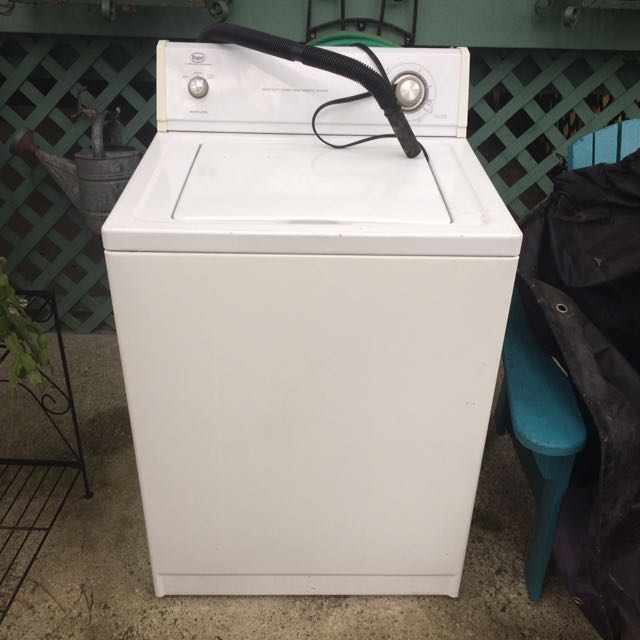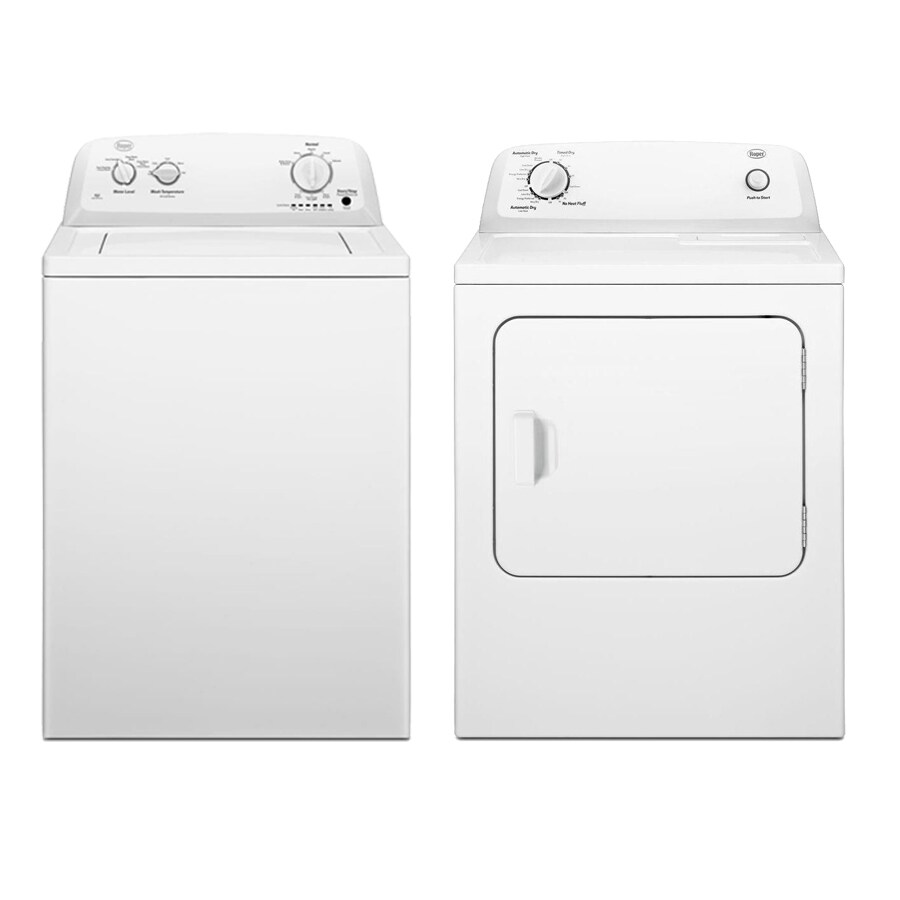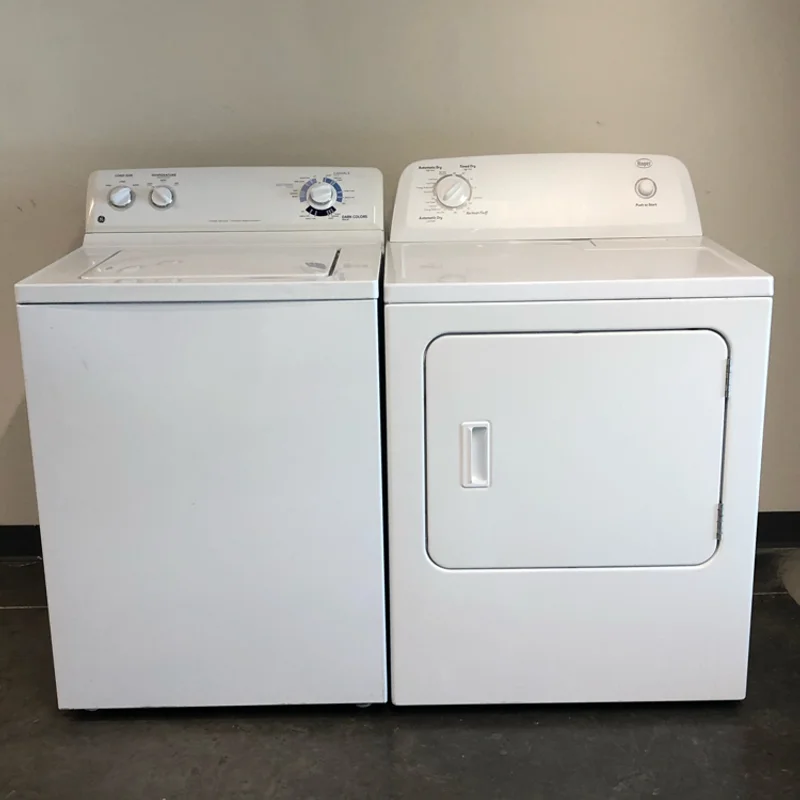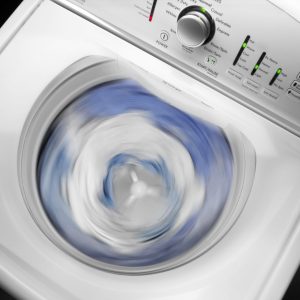Troubleshooting Your Roper Washing Machine
Common Issues with Roper Washing Machines
Roper washing machines are reliable, but like any appliance, they may face issues. Some common problems owners might encounter include the machine not starting, water not filling the tub, draining problems, and cycles not running properly. Owners might also notice leaks, strange noises, or that the washer stops mid-cycle. These issues can stem from various causes like power supply problems, clogged filters, or mechanical wear and tear.

If you find that your Roper washing machine is not performing as expected, a reset might be necessary. This simple step can often resolve minor glitches in electronic appliances. Before you attempt any troubleshooting, ensure the washer is plugged in and that the circuit breaker hasn’t tripped.
In terms of ‘roper washing machine reset’, this refers to the process of rebooting the machine’s control system. A reset can clear error codes or resolve issues that don’t have an apparent cause. It’s a first-line solution that can save time and effort before moving on to more detailed troubleshooting or calling a professional for help.
Remember to refer to the owner’s manual or Roper’s customer support for specific guidance tailored to your washing machine model. If a reset does not solve the issue, it could indicate a more serious problem that may require expert assistance.
How to Reset Your Roper Washing Machine
Sometimes, your Roper washing machine may just need a simple reset to get back on track. This is a basic procedure and can solve various minor issues. You can perform a reset before moving to more complex troubleshooting steps.
Step-by-Step Reset Instructions
Resetting your Roper washing machine is an easy task that you can do in a few simple steps:
- Turn off the machine: Press the power button to turn off your washing machine.
- Unplug the machine: Disconnect the washer from the electrical outlet.
- Wait a moment: Leave the washer unplugged for about 1 minute. This pause allows the machine’s electrical charge to dissipate, resetting the electronic components.
- Plug the machine back in: Reconnect your washer to the power source.
- Turn on the machine: Press the power button to turn the washing machine back on. The washer should now be reset and ready to run a new cycle.
Should the machine not respond to this reset method, refer to your user manual or contact Roper customer support for model-specific instructions.
When to Reset Your Washing Machine
Consider performing a roper washing machine reset in the following scenarios:
- After a power outage or surge.
- If the control panel isn’t responding correctly.
- When you encounter an error code without an obvious cause.
- If the machine is not completing cycles as it should.
Resetting your Roper washing machine is a quick fix that solves many electronic issues. However, if the problem persists after a reset, further investigation might be required to identify the cause. In such cases, it may be time to consult with a professional technician. Remember, a reset is a go-to solution for minor glitches, but it’s not a cure-all for every issue.
Maintenance Tips to Prevent Future Issues
Preventative maintenance can extend the life of your Roper washing machine and optimize its performance. Here are tips to help you maintain your washer and avoid future issues.
Cleaning Your Washing Machine
Regular cleaning is essential for keeping your Roper washing machine in good working order. Here’s how you can clean it effectively:
- Wipe the exterior: Use a damp cloth to clean the outside of the washer.
- Clean the drum: Run an empty cycle with hot water and a cup of white vinegar to sanitize the drum.
- Inspect and clean the gasket: Wipe down the rubber seal around the door to prevent mold and mildew buildup.
- Clear the detergent dispenser: Remove any residue to ensure detergent flows freely during cycles.
- Leave the door open after use: This allows air circulation and prevents odors.
Cleaning not only maintains your appliance but also ensures a fresh and hygienic environment for your laundry.
Checking for Loose Connections and Wear
To prevent mechanical issues, it’s crucial to check for signs of wear and loose connections periodically:
- Inspect hoses and fittings: Look for any leaks or signs of brittleness in the water hoses.
- Check electrical connections: Ensure the power cord and plug are intact and free from damage.
- Test the door latch: A secure door latch is vital for the washing cycle to operate correctly.
- Listen for abnormal sounds: Unusual noises can indicate loose components or objects stuck in the drum.
By keeping an eye on these areas, you can catch and address small issues before they become bigger problems. Regular maintenance not only helps you prevent future issues but can also improve the efficiency and longevity of your Roper washing machine. Remember, these maintenance tips can save you time and money on repairs, and help keep your Roper washing machine reset to optimal settings.
 Error Codes and What They Mean
Error Codes and What They Mean
Your Roper washing machine communicates problems through error codes. Each code signifies a specific issue. Understanding these can guide you to the right fix. Here are common Roper washing machine error codes:
- F1: This indicates a water supply error. Check your water valves and hoses.
- E2: Points to a drainage problem. Inspect the drain hose and pump filter.
- Ld: Stands for ‘Long Drain’. It suggests the washer is taking too long to drain.
- Ul: Means ‘Unbalanced Load’. Redistribute your laundry and try again.
If you see an error code on the display, take note of it. Refer to your Roper washing machine manual for a complete list of codes. Some errors are simple to fix. For others, you may need to reset your washing machine.
After a roper washing machine reset, check if the error persists. If so, the issue might be more serious. In such cases, professional help may be necessary. Keep in mind, a reset won’t fix all error codes. But, it’s a good first step for simpler errors without clear causes.
Always turn off and unplug your washer before investigating error codes. This keeps you safe while you check internal components. With this key step, your ‘roper washing machine reset’ can start off smoothly.
By knowing what these error codes indicate, you’ll be better equipped to troubleshoot. You’ll determine when a reset is enough or when to seek further assistance. Understanding these codes can save you time and help ensure your washer operates efficiently.
Troubleshooting Specific Problems
Troubleshooting specific problems in your Roper washing machine can save you time and money. Here’s how to address two common issues you might face.
Washer Not Starting
If your washer won’t start, try these quick fixes:
- Check the power source: Ensure the machine is plugged in and the outlet works.
- Examine the door latch: A broken latch can prevent the machine from starting.
- Look at the control lock: Disable any control lock features if activated.
- Test the start button: A faulty button may need replacement.
A roper washing machine reset might resolve an unresponsive washer. If not, the issue might need professional attention.
Unusual Noises During Operation
Loud or strange noises from your washer should not be ignored:
- Check for foreign objects: Items in the drum can make rattling sounds.
- Secure loose items: Fasten any straps or ties on clothes to avoid banging.
- Balance the load: An unbalanced load can cause the washer to thump.
- Inspect for wear and tear: Worn-out parts can create grinding or squealing noises.
For persistent or loud noises, consider calling a technician. These could signal deeper mechanical problems.
When you encounter issues like the washer not starting or unusual noises, a roper washing machine reset can often help. But, if these steps do not remedy the situation, seeking professional help is advisable. Regular maintenance might prevent these problems from occurring in the first place.
Professional Repair or DIY: When to Call an Expert
When dealing with a malfunctioning Roper washing machine, you might wonder if you need professional help or if you can fix the issue yourself. A roper washing machine reset is a quick and easy solution to many common problems. But, there are times when you should call an expert. Consider seeking professional repair in the following situations:
- Persistent Error Codes: If error codes continue after resetting, an expert can provide a thorough diagnosis.
- Electrical Issues: Complex electronic problems need a technician’s touch to ensure safety and proper repair.
- Water Leaks: Professional tools and skills are often required to address leaks without causing further damage.
- Mechanical Failures: If you suspect internal parts are broken or worn, a trained repair person should handle it.
- Lack of Expertise: If you’re not confident in your ability fix the problem, it’s best to seek help.
Your Roper washing machine is an investment in your daily life. While a reset may fix minor glitches, expert technicians have the tools and knowledge to take on more complicated repairs. It’s better to call a professional than risk additional damage by attempting DIY repairs without the proper experience or tools.
Safety is another key concern. Any troubleshooting that involves electrical components or water should be approached with caution. If you’re not familiar with safe repair practices, it’s wise to pass the task to a professional.
Remember, consulting an expert can not only ensure a proper fix but may also be more cost-effective in the long run. Improper DIY repairs can lead to more significant issues. Consider the complexity of the problem and your skill level before deciding between professional repair and DIY.
 Warranty and Support Options for Roper Washing Machines
Warranty and Support Options for Roper Washing Machines
When troubleshooting your Roper washing machine, it’s essential to know the warranty and support options available. Roper offers warranties that can provide peace of mind and save on repair costs. Below are options for warranty coverage and customer support to assist with your appliance.
Understanding Your Warranty
Check your user manual to understand the warranty specifics for your washing machine model. Typical coverage might include replacement of defective parts or labor for a certain time period after purchase. Roper’s warranty often covers:
- Parts and labor for the first year after purchase.
- Limited warranty on certain components like the motor or wash drum.
It’s important to have proof of purchase handy if you need to claim your warranty. Keep all receipts and documentation in a safe place.
Contacting Customer Support
If a roper washing machine reset or DIY troubleshooting doesn’t solve the issue, Roper’s customer support can help:
- Phone assistance: Roper provides a customer service phone line.
- Online resources: Access FAQs, user manuals, and troubleshooting guides on Roper’s website.
- Service appointments: Schedule a repair or maintenance visit from a qualified technician.
When calling support, have your model number and description of the issue ready. This will help the representative provide accurate assistance.
Extended Service Plans
Consider purchasing an extended service plan for long-term protection. These plans can extend coverage beyond the original warranty period. They may cover:
- Parts replacement after the manufacturer’s warranty expires.
- Service visits with lower or no additional out-of-pocket costs.
An extended service plan might be a smart investment to keep your washer running smoothly for years to come. Be sure to review what the plan covers and compare it to potential repair costs.
By taking advantage of Roper’s warranty and support services, you ensure your machine gets professional care when needed. Remember, even with solid maintenance and regular resets, some issues require expert attention. Whether it’s honoring a warranty claim or seeking customer support, Roper is ready to assist with your appliance needs.

